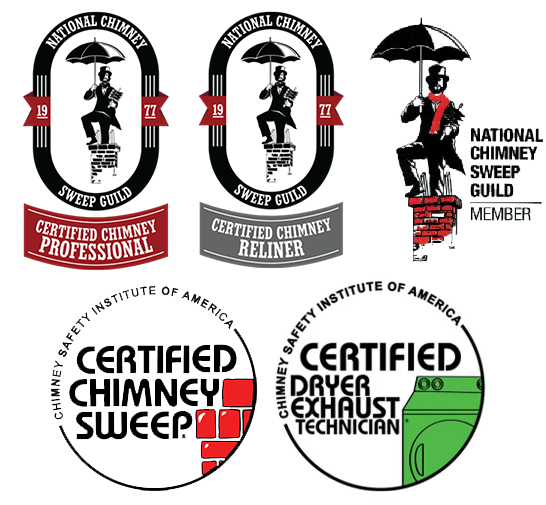
Maintaining a clean chimney is not just about ensuring your fireplace works efficiently; it’s a crucial safety measure every homeowner should prioritize. A chimney clogged with soot, debris, or the highly flammable substance known as creosote can pose serious risks, including the potential for dangerous chimney fires. But how often should your chimney be cleaned to mitigate these risks and keep your fireplace functioning properly? This guide dives into the importance of regular chimney maintenance, factors influencing cleaning frequency, and signs it’s time for a professional chimney sweep.
The Importance of Regular Chimney Cleaning
Regular chimney cleaning is vital for several reasons:
- Preventing Chimney Fires: The buildup of creosote, a byproduct of burning wood, is a leading cause of chimney fires. These fires can be explosive, spread quickly to other parts of the home, and are often undetected until it’s too late.
- Ensuring Efficient Operation: A clean chimney allows for better airflow, which is essential for the efficient and safe operation of your fireplace. It helps in achieving a cleaner burn, thereby reducing smoke and minimizing the accumulation of harmful substances.
- Protecting Health: A blocked or dirty chimney can cause smoke and carbon monoxide to enter your home, posing serious health risks to the occupants. Regular cleaning helps prevent these dangerous gasses from leaking into your living space.
- Avoiding Costly Repairs: Regular maintenance can help identify and address minor issues before they become major problems, saving homeowners significant repair costs in the long run
Recommended Cleaning Frequency
The National Fire Protection Association (NFPA) says chimneys, fireplaces, and vents should be inspected at least once a year for soundness, freedom from deposits, and correct clearances. Cleaning, maintenance, and repairs should be done if necessary. However, several factors can influence how often your chimney actually needs to be cleaned:
Type of Fuel
- Wood: If you frequently use your wood-burning fireplace, stove, or insert, annual cleaning is often necessary due to creosote buildup. The type of wood burned (hardwood versus softwood), its moisture content, and your burning habits can all affect creosote accumulation rates.
- Gas: Gas fireplaces produce less soot than wood-burning ones but should still be inspected and cleaned annually to ensure there are no blockages or operational issues.
- Coal: Similar to wood, coal fireplaces should be cleaned annually due to the soot and debris that burning coal can produce.
- Oil: Chimneys venting oil-fired appliances should be cleaned annually, as the soot buildup can be quite corrosive and potentially block the chimney flue.
Usage Frequency
The more frequently you use your fireplace or stove, the more often it will need to be cleaned. A chimney that is used daily during the colder months will accumulate deposits much faster than one used only occasionally.
Signs It’s Time for a Cleaning
- Visible Creosote Buildup: If you can see a buildup of shiny, tar-like substance inside your chimney, it’s time for a cleaning.
- Poor Fireplace Performance: Difficulty starting fires, poor burning efficiency, or smoke entering the room can all be signs of a blocked or dirty chimney.
- Unpleasant Odors: A foul smell emanating from the fireplace, especially during humid days, can indicate excess creosote and soot buildup.
- Animal Nesting: Birds, squirrels, and other animals can nest in chimneys, especially in the off-season, blocking the flow of air and smoke.
Hiring a Professional Chimney Sweep
While some aspects of chimney maintenance can be handled by the homeowner, such as clearing obstructions from the chimney cap, the actual cleaning of the chimney’s interior should be done by a professional chimney sweep. Professional sweeps are equipped with the necessary tools, knowledge, and experience to safely and effectively clean your chimney and conduct a thorough inspection of its structure and functionality.
What to Expect
A professional chimney sweep will:
- Inspect your chimney for structural integrity, signs of wear, and operational issues.
- Use specialized tools to remove soot, debris, and creosote from the chimney liner, firebox, smoke chamber, and damper.
- Perform a smoke test to ensure proper draft and identify any leaks.
- Provide recommendations for any needed repairs or improvements.
Choosing the Right Professional
When selecting a chimney sweep, look for individuals or companies that are certified and insured. The Chimney Safety Institute of America (CSIA) is a reputable organization that certifies chimney sweeps, ensuring they have undergone rigorous training and adhere to high standards of practice.
Regular chimney cleaning is a non-negotiable aspect of home maintenance for anyone with a fireplace or wood stove. It’s essential not only for the efficiency and enjoyment of your fireplace but, more importantly, for the safety of your home and family. By adhering to the recommended annual inspections and cleanings, and recognizing the signs that additional cleanings may be necessary, homeowners can enjoy the warmth and comfort of their fireplace, knowing they’ve taken the proper steps to prevent chimney fires and other hazards. Remember, when it comes to chimney maintenance, it’s always better to err on the side of caution and consult a professional chimney sweep to ensure your chimney is clean, safe, and ready to use.

